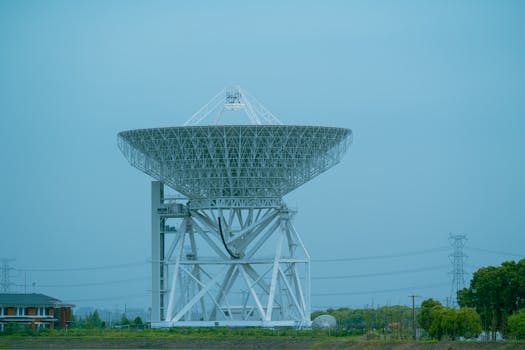Orbiting Innovations: Key Updates in Satellite Telecommunications Technology

Orbiting Innovations: Key Updates in Satellite Telecommunications Technology
Orbiting Innovations: Key Updates in Satellite Telecommunications Technology is transforming the way we communicate and access information. The satellite telecommunications industry has experienced significant growth and innovation in recent years, driven by advances in technology and increasing demand for global connectivity.
The development of new satellite constellations, such as OneWeb and Starlink, is providing faster and more reliable internet services to remote and underserved communities. These constellations consist of hundreds of small satellites in low Earth orbit, which work together to provide seamless coverage and high-speed connectivity.
Satellite Design and Launch Technology
Advances in satellite design and launch technology are also playing a crucial role in the growth of the satellite telecommunications industry. New satellite designs, such as the use of 3D printing and advanced materials, are enabling the creation of smaller, lighter, and more efficient satellites. This is reducing the cost of launching satellites into orbit and making it possible to deploy larger constellations.
Launch technology is also improving, with the development of reusable rockets and more efficient launch systems. This is reducing the cost of accessing space and enabling more frequent launches, which is driving the growth of the satellite telecommunications industry.
Signal Processing and Interference Mitigation
Another key area of innovation in satellite telecommunications is signal processing and interference mitigation. As the number of satellites in orbit increases, the risk of signal interference also grows. To mitigate this, researchers are developing new signal processing techniques, such as advanced modulation and coding schemes, to improve the efficiency and reliability of satellite communications.
Additionally, the development of new interference mitigation techniques, such as beamforming and nulling, is enabling satellites to operate more efficiently in congested environments. This is critical for the growth of the satellite telecommunications industry, as it enables the deployment of larger constellations and the provision of more reliable services.
Applications and Future Directions
The applications of satellite telecommunications are diverse and rapidly expanding. From providing internet services to remote communities to enabling the Internet of Things (IoT), satellite telecommunications is playing a critical role in connecting the world.
In the future, we can expect to see even more innovative applications of satellite telecommunications, such as the use of satellites for Earth observation, navigation, and scientific research. The development of new satellite constellations and the improvement of signal processing and interference mitigation techniques will also continue to drive the growth of the industry.





